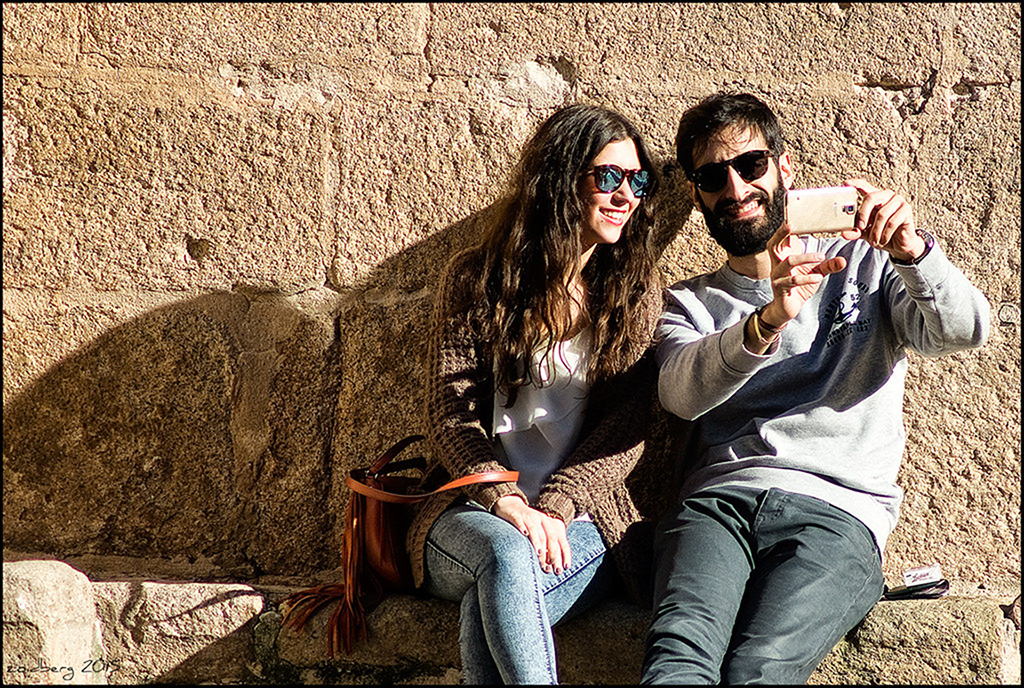The thousand faces of the selfie on Instagram
The selfie is one of the great stars of Instagram and the most modern interpretation of the portrait. Far from being just a fad, it has become almost a photographic genre in its own right. Since the legendary selfie of Ellen DeGeneres at the 2014 Oscar ceremony, the selfie concept has matured and gained popularity. Until that moment, Google searches for the term "selfie" were almost non-existent. Now, the selfie has firmly established itself and left in its wake a vast legacy of self-portraits. The UOC research Selfiestories and personal data looks at the use of Instagram as an authentic content creation tool, and the selfie as a medium for conveying personal narrative.
For some, it is an expression of narcissism; for Gemma San Cornelio, professor at the UOC's Faculty of Information and Communication Sciences, and researcher on the project, "the selfie shifts the use of the photo from the traditional 'this is what it's like' to 'I was there'". And she explains that through its personal nature, the selfie expresses a narrative in image form and, at the same time, it forms part of the modern visual culture based around social media and digital photography.
There are many variants on the selfie, some of which have raised controversy: Selfies of bottoms (belfies), on the farm (felfies), of childbirth (birthies), in a drunken state (drelfies), with a group of people (groufies), in front of bookcases (shelfies), etc. "tags are key on Instagram: they allow us to understand certain social habits and to then identify and collect related images", says Toni Roig, one of the group's researchers. The arrival of Instagram, six years ago today, created a huge surge in the number of images of this type, according to the research.
A natural, everyday phenomenon
In 2015, there were 320 million image uploads to Instagram with the tag "selfie"; so far this year there have been 271 million. In recent years, the UOC researchers have observed that the number of photos tagged as selfies has been going down, but not the actual number of selfies. The reason is simple: "It is a sign of the normalization of the phenomenon; the tag is unnecessary because everyone can recognize a selfie for what it is", explains San Cornelio. As the research shows, users consider the "selfie" tag to be redundant when the photo is easily recognizable for what it is.
"The history of the selfie can be looked at from two broad perspectives: the psychological and the cultural", adds Roig. The former leads us to a negative conception: "The use of the selfie is seen as a narcissistic act, a danger on social media and in general for its influence on the self-esteem of young people. On the other hand, from a cultural point of view, it is linked to new ways of communicating based on self-presentation of 'me', to express emotions and moods." In San Cornelio's opinion, "some of these ideas are already well established in social and popular imagery".
A tool for activism
"There are alternative perspectives on the concept of the selfie as an individualist action by those who seek the common good," explains Roig, for example, those who use selfies for activist purposes, to further the cause of minority groups: transgender selfies, the publication of photos of people of colour on social media (#blackselfieday), or as a political protest against the pressure on Muslim women to wear veils using the hashtag #meninjihab. Others use selfies to portray stories of overcoming serious illnesses or personal challenges, for example #nomakeupselfieforcancer (selfies without make-up to raise money for cancer sufferers), and #retounmillon.
The project Selfiestories and big data, funded by the BBVA Foundation, looks, in part, at the initiatives that have arisen for social mobilization or the support of good causes. "Our research is motivated by a desire to discover whether the selfie is merely contributing to narcissism in today's society, or whether it is in fact a meaningful and genuine form of expression," emphasizes San Cornelio.
"Beyond the stereotypes, the selfie offers a wealth of different perspectives for analysis", the researchers add, concluding that it has an artistic and creative side, in the way in which it is produced and processed with filters, or cropped; a narrative component, because it tells a story; and a social side, in that it is distributed on social media.
Experts UOC
Press contact
-
Editorial department
